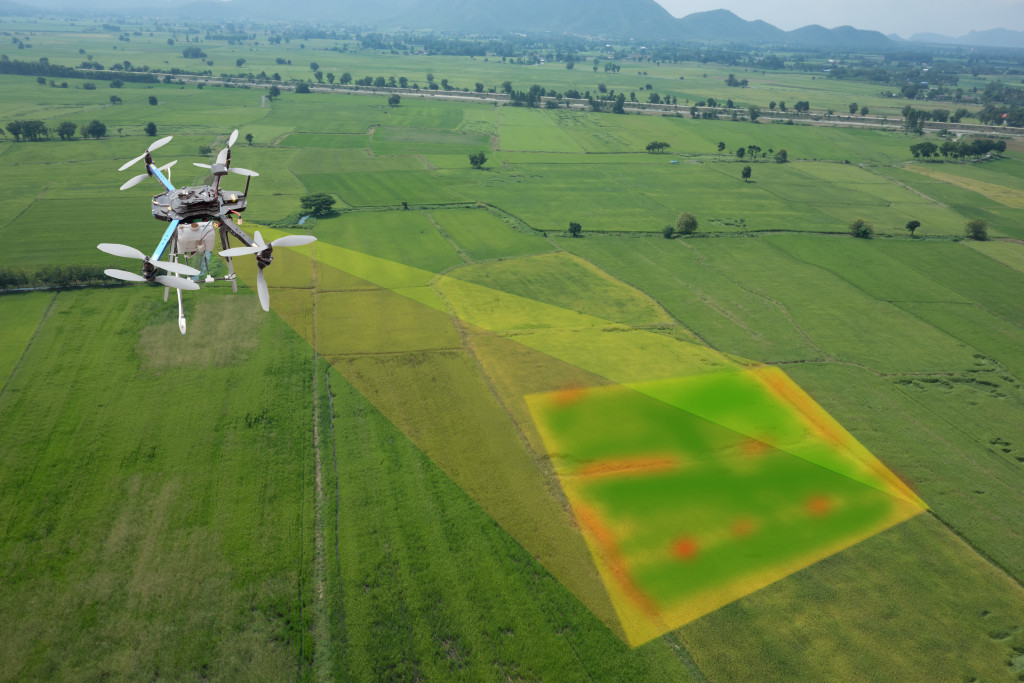Technology is constantly advancing, which means different industries must find ways to keep up. The farming business is no different. To stay competitive, many farmers are turning to modern methods and technologies. Some of these changes are small, while others are total game-changers. Here’s a look at some ways modernization is affecting the farming business.
Drones
One of the most talked-about changes in the farming business is using drones. Drones are unmanned aerial vehicles that have been around for some time, but recently they’ve become prevalent in the farming industry.
Farmers can use it for various tasks, including surveying crops, spraying pesticides, and even delivering packages. Many are finding that drones can save them time and money. That’s because they can cover more ground than a human worker and do it faster and with greater accuracy.
With advancements in technology, drones are also becoming more intelligent, capable of analyzing data and providing better insights. So, it’s no surprise that many farmers are taking advantage of this technology.
Reusable Energy Sources
Another way farmers use technology is by investing in reusable energy sources. These are energy sources that produce energy from renewable resources such as sunlight, wind, and water.
These sources can be used to power farms and other agricultural operations. Solar power, for example, can be used to power irrigation systems, lights, and other farm equipment. Wind turbines can also be a great way to generate electricity.
Not only do renewable energy sources save money in the long run, but they’re also better for the environment. They create less pollution and reduce dependence on traditional energy sources. By investing in this technology, farmers can make their operations more efficient and eco-friendly.
Artificial Insemination
In some cases, farmers are using artificial insemination to breed animals. It’s a responsible and economical way to produce new animals quickly and efficiently. It also reduces the risk of passing on genetic disorders.
This method is often used with cattle because it allows farmers to easily control which traits are passed on to offspring. Quality Charolais AI sires can produce higher-quality offspring by breeding animals with desirable characteristics. It’s a great way to improve the productivity and quality of a herd without having to wait for multiple generations.
Another advantage of artificial insemination is that it can be used to breed rare animals. By collecting and cryogenically freezing semen, farmers can preserve valuable genetic material for the future.
Natural Pesticides
Farms are also beginning to use natural pesticides instead of chemical ones. Natural pesticides are made from plants or other natural substances and are less harmful to the environment.
This ethical practice involves using natural predators and repellents to keep pests away. For example, farmers may use predator insects such as ladybugs or spiders to eat harmful bugs. They may also use natural repellents such as garlic or citrus oils to keep away pests.
Natural pesticides are safer for the environment and can be more effective than chemical pesticides. Plus, they don’t have the same long-term health effects that some synthetic pesticides have. So, by using natural pesticides, farmers can keep their crops healthy without damaging the environment.

Smart Devices
Smart technology is becoming more prevalent on farms as well. These devices can be used for various tasks, including monitoring crop growth, tracking livestock, and controlling irrigation systems.
Smart devices make it easier for farmers to manage their operations and make informed decisions about their crops and animals. For instance, farmers can use sensors to monitor soil temperature and moisture levels. They can also track the movements of their livestock using GPS devices.
Smart technology helps farmers stay on top of their operations, which can be beneficial for both the farmer and the environment. And by leveraging this technology, farmers can make their operations more efficient and reduce waste.
Robotics
Much like drone technology, robotics is also becoming more popular among farmers. Robots can be used for a variety of tasks, including harvesting and planting crops, weeding fields, and monitoring crop health. Robots can be programmed to perform a variety of tasks with precision, which saves time and energy for farmers. Plus, they can help reduce the risk of human error.
Robotics is becoming increasingly popular in the farming business. They offer farmers a way to make their operations more efficient and reduce time spent on tedious tasks. As a result, farmers can focus more on other aspects of their business and use their resources better.
As you can see, there are many ways that modernization is changing the farming business. Some of these changes are small, while others are totally game-changers. Farmers who embrace change and adopt new technologies will be better positioned to compete in the modern marketplace. So, if you’re a farmer, don’t be afraid to try something new. With the right tools and strategies, you can make your farm more efficient, productive, and sustainable.



